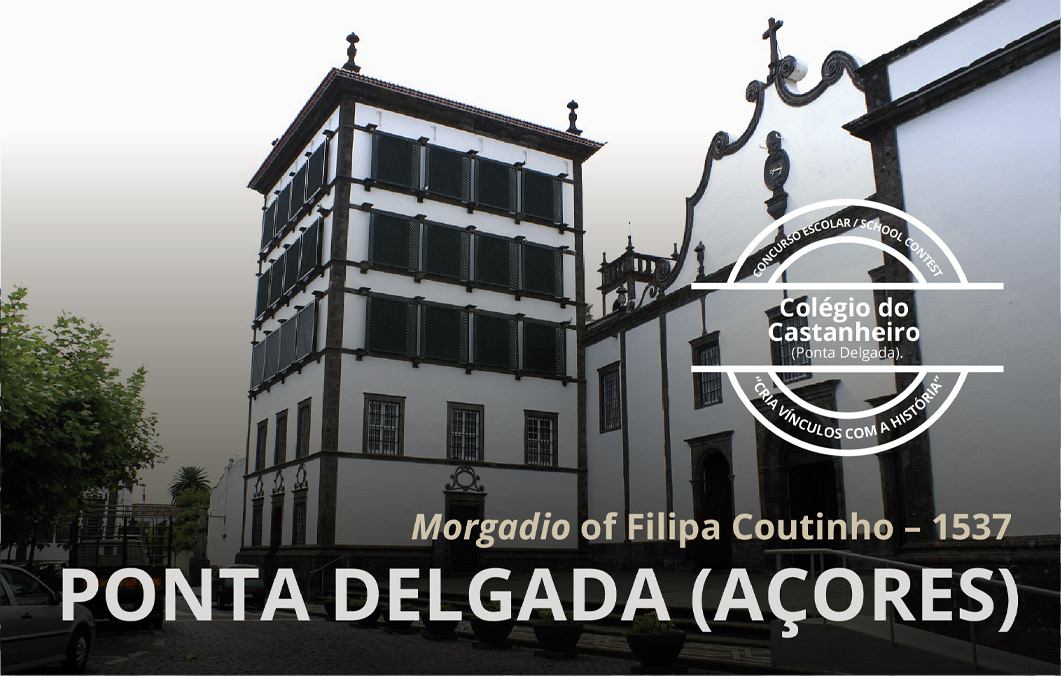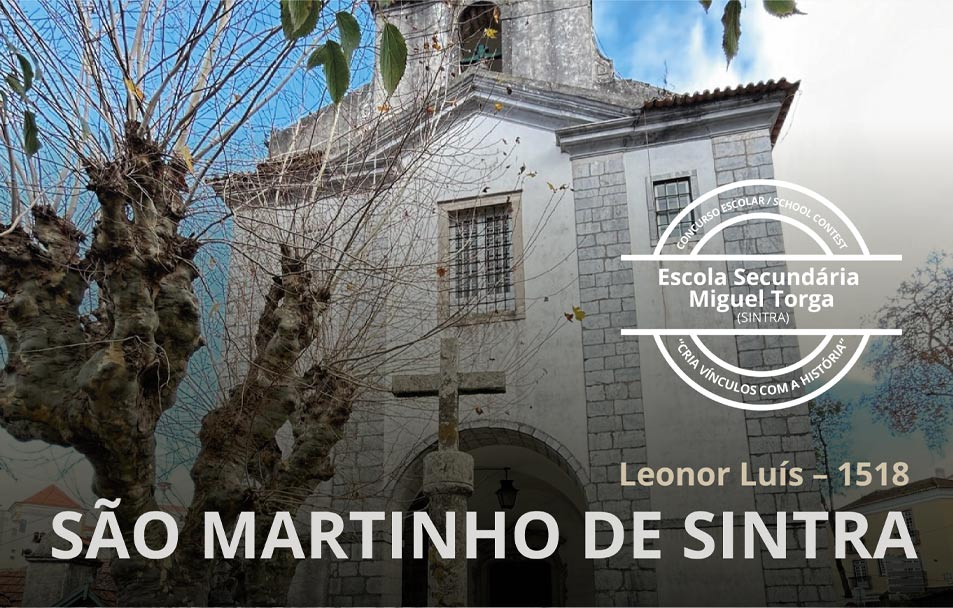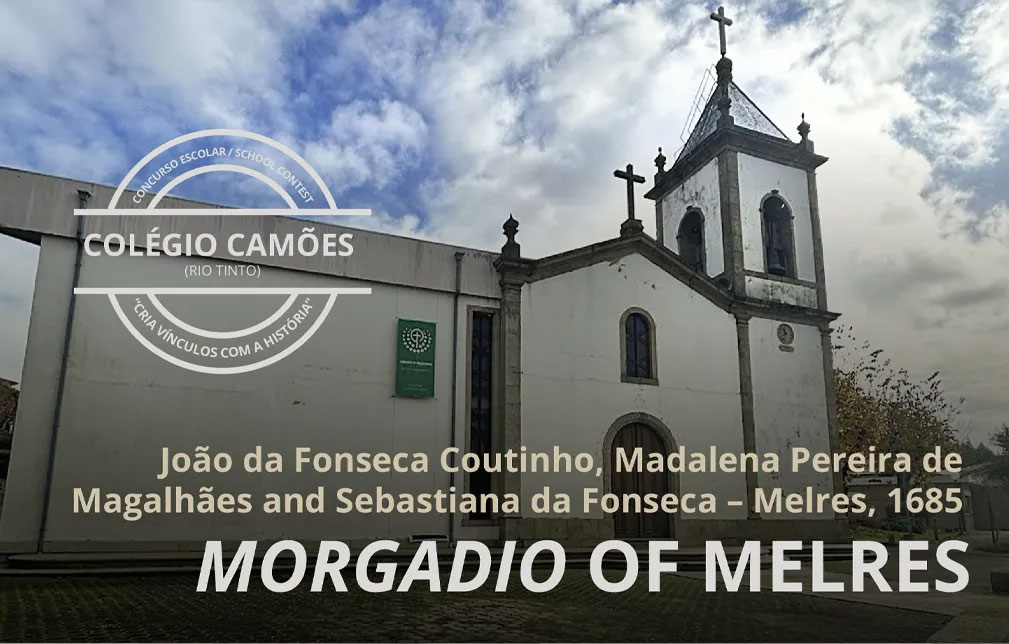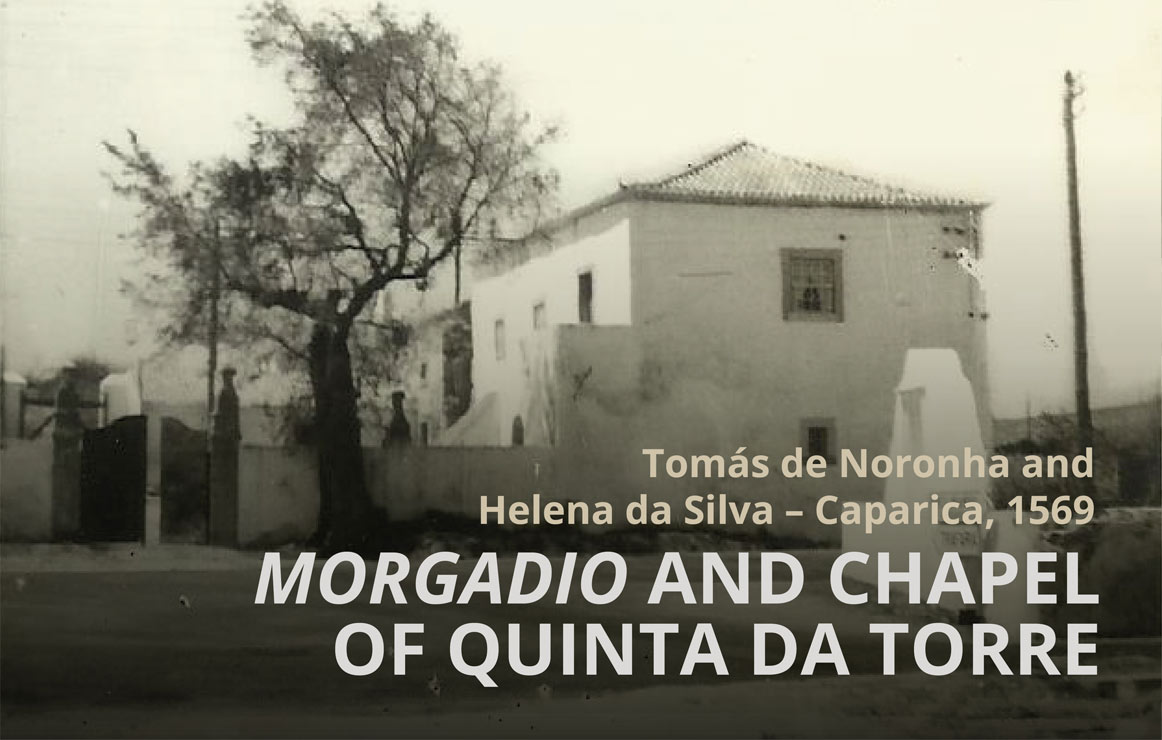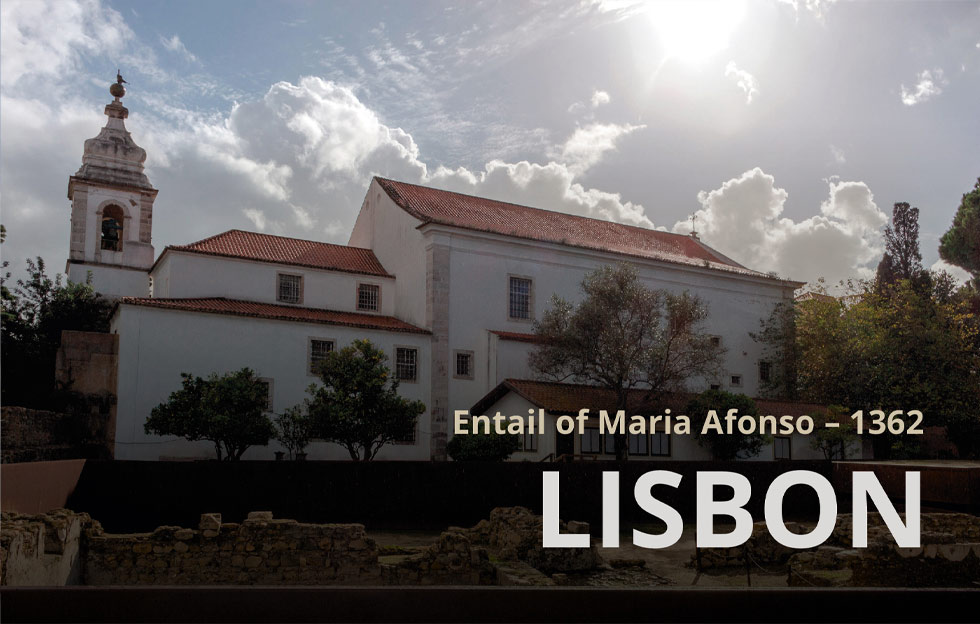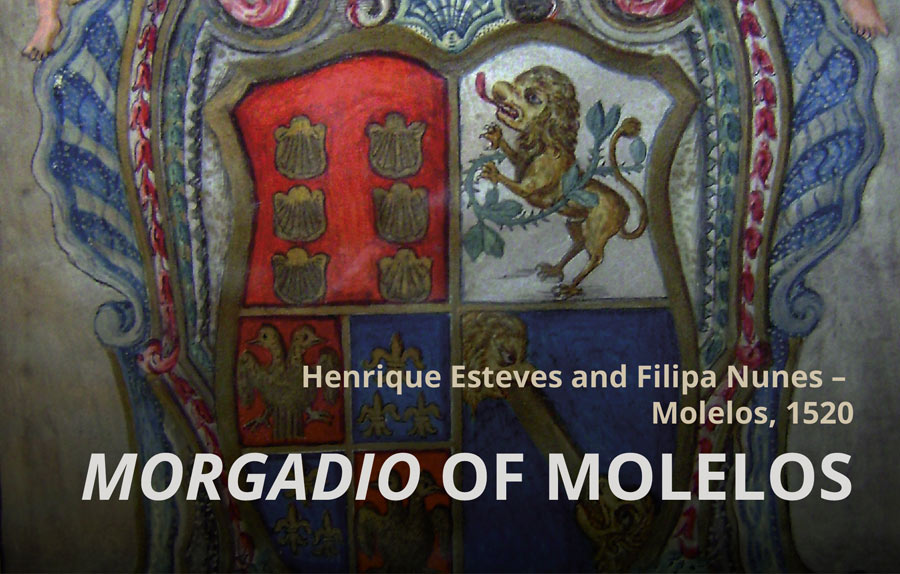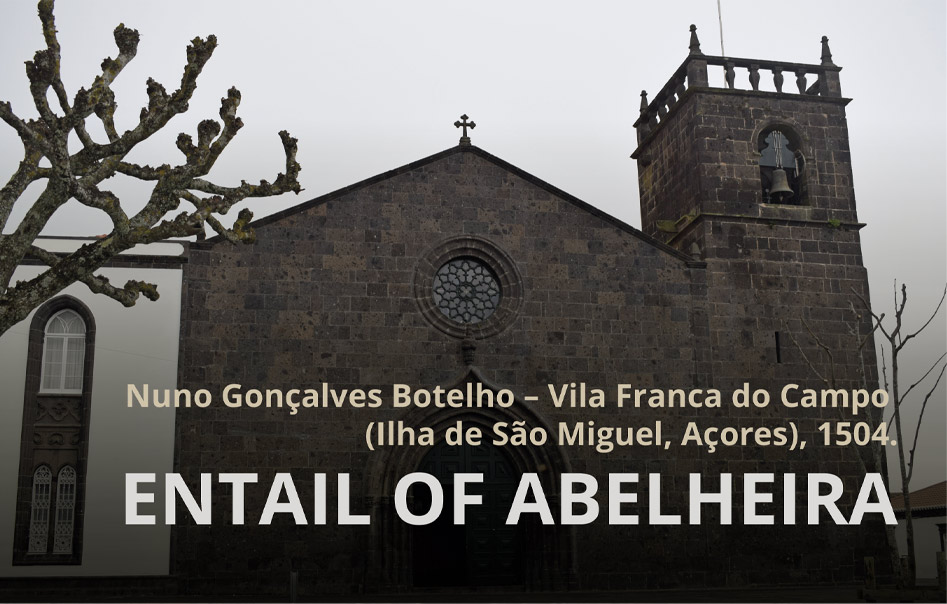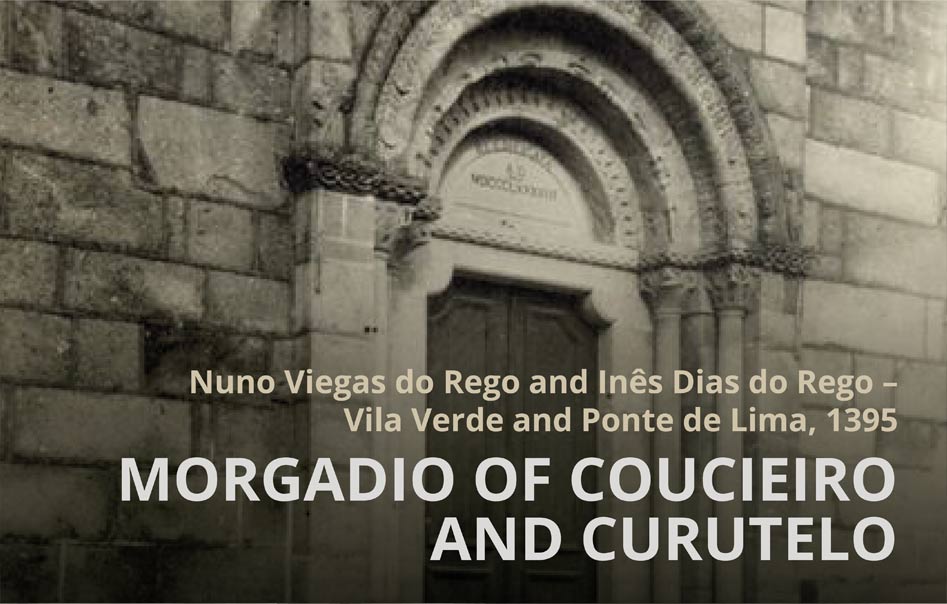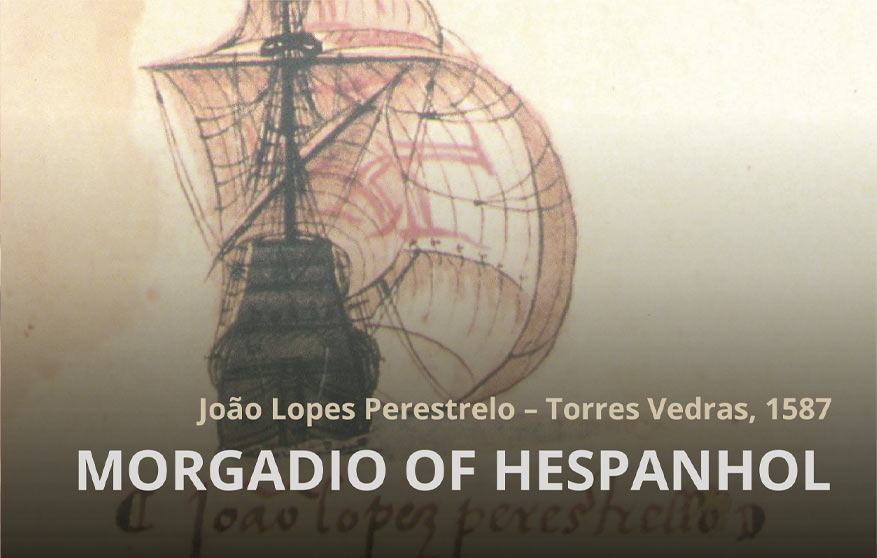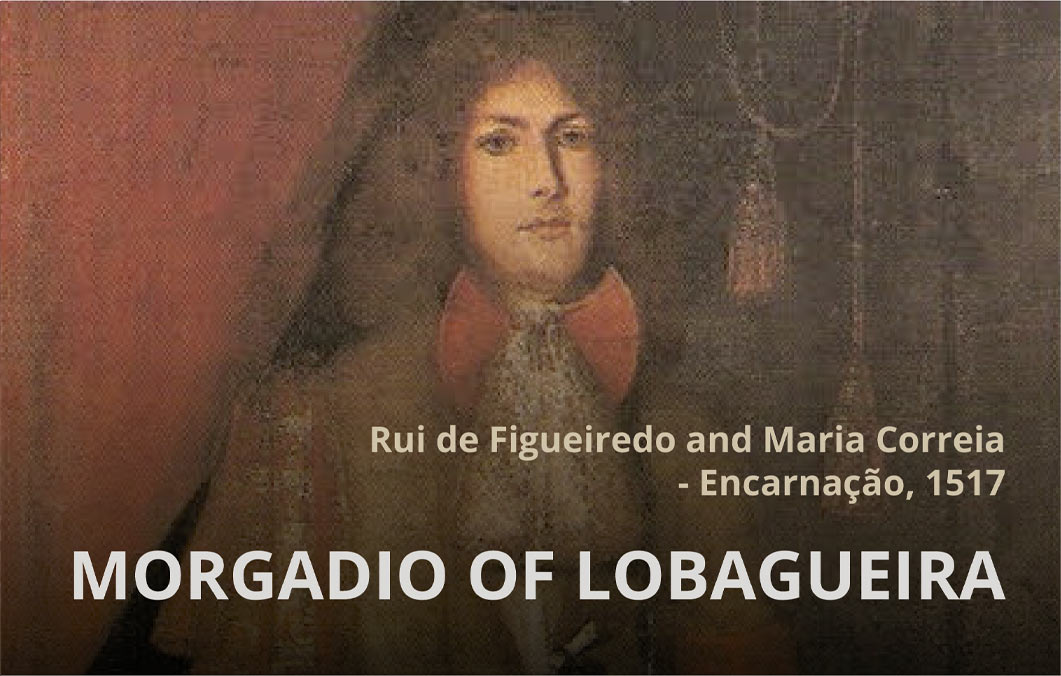Entail of the month (May, 2022)
Chapel of Isidro de Almeida
Campolide, 1572
The chapel founded by Isidro or Isidoro de Almeida (c.1526-1574) by will dated 30 August 1572 deserves mentioning, above all, for its founder and the particular context of its institution.
Isidro de Almeida, son of a licentiate and Lisbon citizen named Gaspar Lopes de Almeida and his wife, Catarina de Gouveia, stood out for his war achievements as a military expert. He was also the author of works on the subject. According to Sousa Viterbo, if Isidro “was not a military architect, he was at least an artillery engineer, an expert in the defence of squares. Moreover, he was also an expert in metal-related matters, perhaps a mining engineer, in the double sense of the word, both in fortification mines and metallic mines” (VITERBO, 1988, p. 7). In this capacity and as a noble knight of the king’s household, he received in 1559 the office of metal purveyor and foreman (ANTT, Chancelaria de D. Sebastião e D. Henrique, lv. 2, fl. 324). Three years later, he was with the Portuguese forces at the siege of Mazagão. His deeds and explosive devices are mentioned in Agostinho Gavy de Mendonça’s chronicle about the battle in 1607 (MENDONÇA, 1890, pp. 76, 84-85, 90, 103-104, 122, 128, 137 and 143). At one point, the chronicler describes a mine “extremely difficult to make” leading to the impressive explosion of seven barrels of gunpowder so that “the living were amazed” (idem, pp. 103-104).
These and other military deeds inside and outside the Portuguese territory (FEIO, 2014; SOUSA, 2013) gave Isidro de Almeida the privilege of being close to the royal court and household. Such proximity is clear from his will: he addresses the queen directly, reminding her of a conversation they had. He also addresses the counts of Vimioso, asking them to protect Isidro’s wife and children after his death.
While on his way to another military campaign in Africa, at the king’s orders, Isidro, then aged 46, wrote his will and instituted a chapel. In his words, he headed to Africa “to do what His Highness has sent me to do in secret, this service being a dangerous thing and deed and of such importance to the common good of this kingdom and the particular desire of the our lord the king, as only His Highness will know” (ANTT, Arquivo Gama Lobo Salema, cx. 16, pt. 129, fl. 1v). We do not know what secret mission this was that pleased King Sebastião so much, but it undoubtedly demonstrates the king’s trust in the military engineer’s expertise.
Given the potential dangers, Isidro de Almeida decided to apply one-third of his inheritance (terça) to found a chapel in the Monastery of São Bento in Campolide, the construction of which had just started. Perhaps influenced by his training in architecture, Isidro indicated exactly where the chapel should be built – within the porch that stood below the dormitory at the entrance to the church. So that no doubt remained, the will states that Isidro de Almeida had marked the exact spot in the monastery’s layout.
The chapel was to be dedicated to Saint Gregory the Great, with the heirs and executors of the will being responsible for deciding its shape and form on the condition that it were completed within ten years of writing the will. The tombs of the founder and the future administrators were to be inside, with the obligation to say mass annually for the founder’s soul on Saint Gregory’s day. Apart from the implements necessary to celebrate mass, a stone slab with the name of the entail founder carved should also be placed in the chapel. It should also mention the “good fortune” of Isidro de Almeida in Mazagão and the journey to Africa that he was then about to undertake (ANTT, Arquivo Gama Lobo Salema, cx. 16, pt. 129, fl. 5).
All the property making up the institutor’s terça was entailed to the chapel. The head of the entail was a manor house located in Campolide opposite of the monastery, later to be known as Quinta das Castelhanas. The first chapel administrator was Maria de Vasconcelos, wife of Isidro de Almeida and daughter of Vitória de Ornelas, the last nanny of Prince Felipe (son of King João III) who also assisted in the upbringing of King Sebastião. If Maria de Vasconcelos annexed her terça to her husband’s chapel, as she had promised, she could change some of the conditions of the succession of the administration as long as she had the approval of one of Isidro de Almeida’s siblings.
The succession conditions included, as seen in several other entails of the age, a preference for the eldest male child, followed by the eldest daughter, and the exclusion of illegitimate descendants. If none of the three children of the couple – Desidério, Lourenço, and Catarina – survived, the administration should pass to the closest male relative considered most worthy by the monarch. The administration was never to be taken away from the founder’s family “for any reason in the world” (ANTT, Arquivo Gama Lobo Salema, cx. 16, pt. 129, p. 7). However, should there be no heirs in direct and collateral lines, any male individual having the surname Almeida could be summoned to become the administrator, preferably someone with a favored position in the king’s household. All administrators were required to use the surname Almeida, thus perpetuating the founder’s name. In addition, they had to be married by the age of 45 under the penalty of forfeiting the administration. After marriage, they were also required to annex to the chapel the terças of both husband and wife, thus progressively increasing the patrimony entailed.
Isidro de Almeida survived his secret mission in Africa. On 26 June 1573, he undersigned the dedication of his work Quatro Livro de Isidoro de Almeida. Das instruções militares (ALMEIDA, 1953), one of the oldest works in Portuguese about warfare in the modern period (FEIO, pp. 246-275). According to the author, the dedication was written “at such a difficult time” personally. We do not know the reasons why, but Isidro died soon afterwards, in late 1574, since his will was opened on 7 December of that year.
The chapel founded by Isidro de Almeida survived at least until the first quarter of the nineteenth century. After the death of the eldest son, having no direct successors, the entail passed to the closest relatives, the Salema family, at the beginning of the seventeenth century. At an unknown date, these lost the administration to the Crown, which then passed it on to “some Castilian women” – hence the name by which the major manor house in the entail became known. Around 1825, the Salema family tried to recover the administration of the chapel founded by the military engineer, probably without success.
Rita Sampaio da Nóvoa
ARQUIVO NACIONAL TORRE DO TOMBO – Arquivo Gama Lobo Salema, cx. 16, pt. 129.
—- Chancelaria de D. Sebastião e de D. Henrique, lv. 2, fl. 324.
ALMEIDA , Isidoro de – “O quarto livro das instruções militares”, in A. Faria de Morais, “Arte Militar quinhentista”, offprint of Boletim do Arquivo Histórico Militar , v. 23, Lisbon: 1953. Available at: https://ahm-exercito.defesa.gov.pt/viewer?id=276355&FileID=2326289&recordType=Description. [accessed on 18 May 2022]. See the copy available at: https://proxy.europeana.eu/10501/bib_rnod_262355?view=http%3A%2F%2Farquivodigital.defesa.pt%2FImages%2Fwinlibimg.aspx%3Fskey%3D%26doc%3D276967%26img%3D1670%26pdf&disposition=inline&api_url=https%3A%2F%2Fapi.europeana.eu%2Fapi. [accessed on 18 May 2022].
FEIO, Gonçalo – O ensino e a aprendizagem militares em Portugal e no Império, de D. João III a D. Sebastião: a arte portuguesa da guerra, Lisbon, Faculdade de Letras, Universidade de Lisboa, 2014. PhD dissertation in History. Available at: https://repositorio.ul.pt/handle/10451/10965 [accessed on 18 May 2022].
MENDONÇA, Agostinho Gavy de – História do cerco de Mazagão, Lisbon: Typ. do Commercio de Portugal, 1890 [1607].
SOUSA, Luís Costa – Escrita e prática de guerra em Portugal 1573-1612, Lisbon, Faculdade de Letras, Universidade de Lisboa, 2013. PhD dissertation in History. Available at: https://repositorio.ul.pt/handle/10451/8904 [accessed on 18 May 2022].
VITERBO, Francisco Marques de Sousa – Dicionário histórico e documental dos arquitectos, engenheiros e construtores portugueses, vol. I, Lisbon: Imprensa Nacional – Casa da Moeda, 1988 [1899].
Other entails of the month



